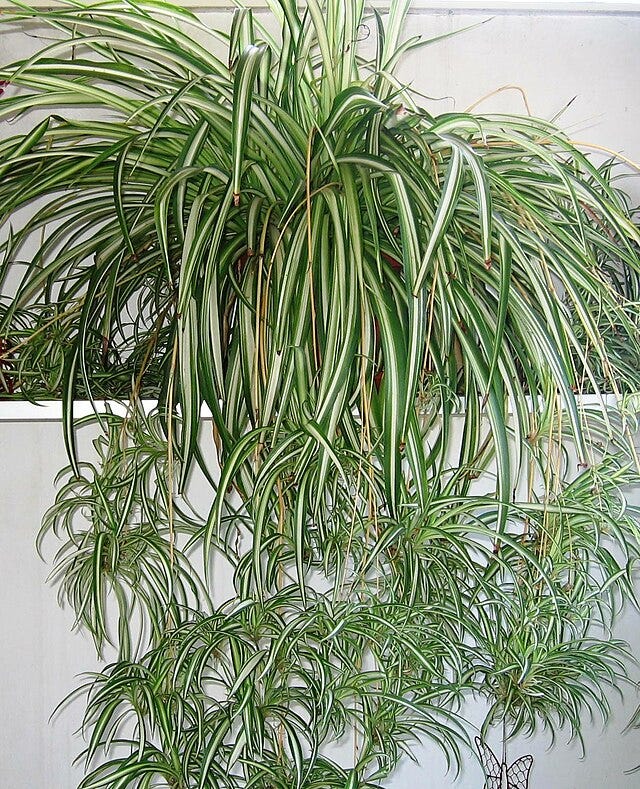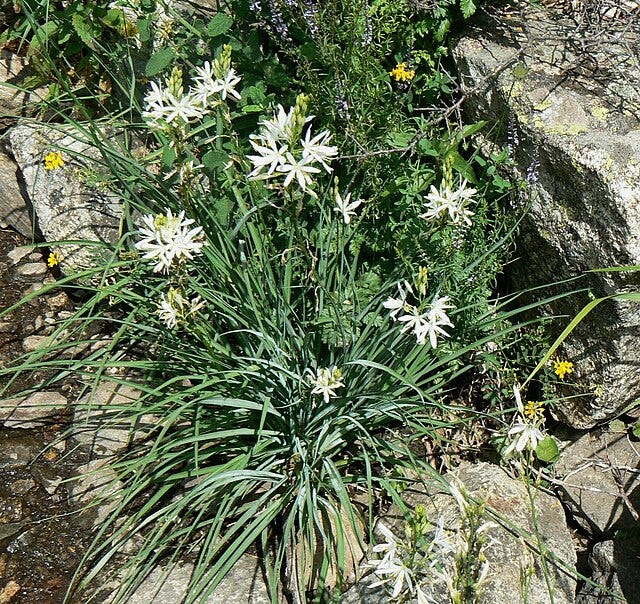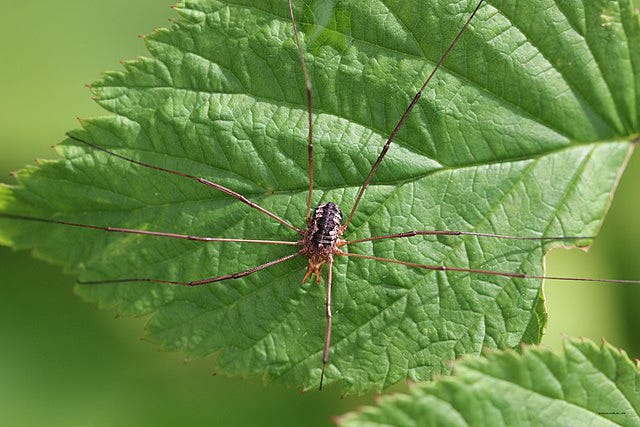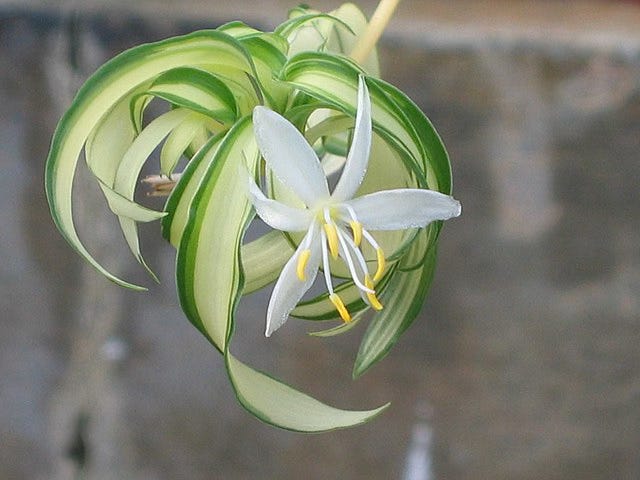The spider plant, everyone knows this one. Even without a green thumb you can keep this grassy-leaved hanging plant alive. Native to Southern Africa, they have thick tuberous roots that store water, so even if you forget to give it a drink every now and then, it’ll be ok. But what makes them famous are their trailing plantlets, little plant babies growing at the ends of long stems. In its natural environment the spider plant is a ground or cliff dweller and would grow similarly to a strawberry plant. They send their long trailing stems, called rhizomes, out into the surrounding soil and the plantlets growing on them root and grow and send out more rhizomes. Eventually you have a pretty big colony of related plants.


It’s easy to imagine that the Clorophytum comosum is called a spider plant because plantlets hanging off of their gracefully arched parent plant look like a brood of spiders chilling with their big mama. But I was surprised to learn that the plant’s common name has a completely different origin. According to The Laidback Gardener, there is a plant in Europe called Anthericum liliago that is similar in appearance to the spider plant, the emerald green version anyway. The variegated variety is more common in the plant trade, but naturally it tends to be a solid green, hence the chlorophytum moniker, which very creatively means green leaf.


Anthericum liliago was thought to be an antidote for spider bites and the plant is commonly called the spider plant in Mediterranean countries. (It is called St. Bernard’s lily in the US, but exploring that is beyond our current purview.) Clorophytum comosum was first described in 1794 by Carl Peter Thunberg and he called it Anthericum comosum assuming the two plants were related. A little while later both plants were moved into a genus called Phalangium. Phalangium is also a genus of arachnid commonly called harvestmen or daddy longlegs, depending on where you live. Curiously, the Phalangium are not even spiders, but are their own unique kind of arachnid. This is what we call a bit of a taxonomic cluster@#^&.
By 1862 the plants were correctly separated into their own respective genera, but the name spider plant adhered to both of them like so much spiderweb. For the record, lest we leave the Phalangium with a bad reputation, they don’t bite and are not dangerous. In fact, they feed on several garden pests, like aphids, leafhoppers, caterpillars, and mites. They are admittedly a little creepy with their very, very long legs and occasionally disturbing nesting behaviors (don’t click here if you’re nightmare prone). But ultimately they’re good garden helpers and harmless. I’d probably also be remiss if I left you thinking that either Anthericum liliago or Clorophytum comosum could treat a spider bite. They cannot.
Our spider plant, Chlorophytum comosum, is still pretty cool though, several different studies have determined it to have antitumor, antibiotic, and antioxidant properties, and the roots are said to be good salve for burns. In some places the root tubers are eaten, but I couldn’t find any evidence of the leaves being eaten. The Nguni people of Central and Southern Africa hang the plants in rooms where pregnant women sleep as a protective charm and the roots are dipped in water daily which is drunk by them as well.
The spider plant is also famously known from NASA’s 1989 Clean Air Study to determine methods of purifying air in closed environments, you know, like space stations and shuttles. I see plants mentioned as air purifiers a lot and I feel like a caveat is good to include here. The NASA study tested these plants in sealed environments with no airflow. This is not your house. Houses are far from airtight and most of us have HVAC systems, or at least open our windows on occasion. How effective are plants at snatching impurities from moving air? We don’t really know. I have a billion plants and my apartment still forever smells like my downstairs neighbor’s cooking (cries garlic powder tears). I wouldn’t expect to set a spider plant down in the middle of the table at your Uncle Leo’s stogie and poker fest and get fresh air is all I’m saying.
So that’s it! An interesting origin story, some cool medicinal properties, a little folklore, and some myth busting. Not bad for what is a pretty common, but really cool plant!
This month’s plant will serve as inspiration for the paid posts in my 100% Plant-Based Horror sections. Here’s the breakdown, in case you’re new and/or curious. And don’t forget, subscriptions are only $2.50/month because everything is expensive and we’re all broke.
First week of the month - The Lab (that’s this post!) - Free for everyone!
Second week of the month - The Witch Lab (a short, spooky piece from a plant witch’s journal detailing one of her experiences helping (I use the term loosely) a client using the featured plant of the month - Paid subscribers only, here’s a freebie you can read to check it out!
Third week of the month - The Spell Book (an entry from The Witch’s spell book detailing how she uses this plant for her dark magic including spells, chants, recipes, instructions, and more). Paid subscribers only, here’s a freebie you can read to check it out!
Fourth week of the month - 100% Plant-Based Horror story featuring the month’s plant. These are longer stories that include everything from ghosts, to parasites, aliens, experimental supplements, and more! - Paid subscribers only, here’s a freebie you can read to check it out!






Now I want to put a spider plant in a story (the first one)
They are the tatty unwanted stepchildren of houseplants, unloved and disregarded.